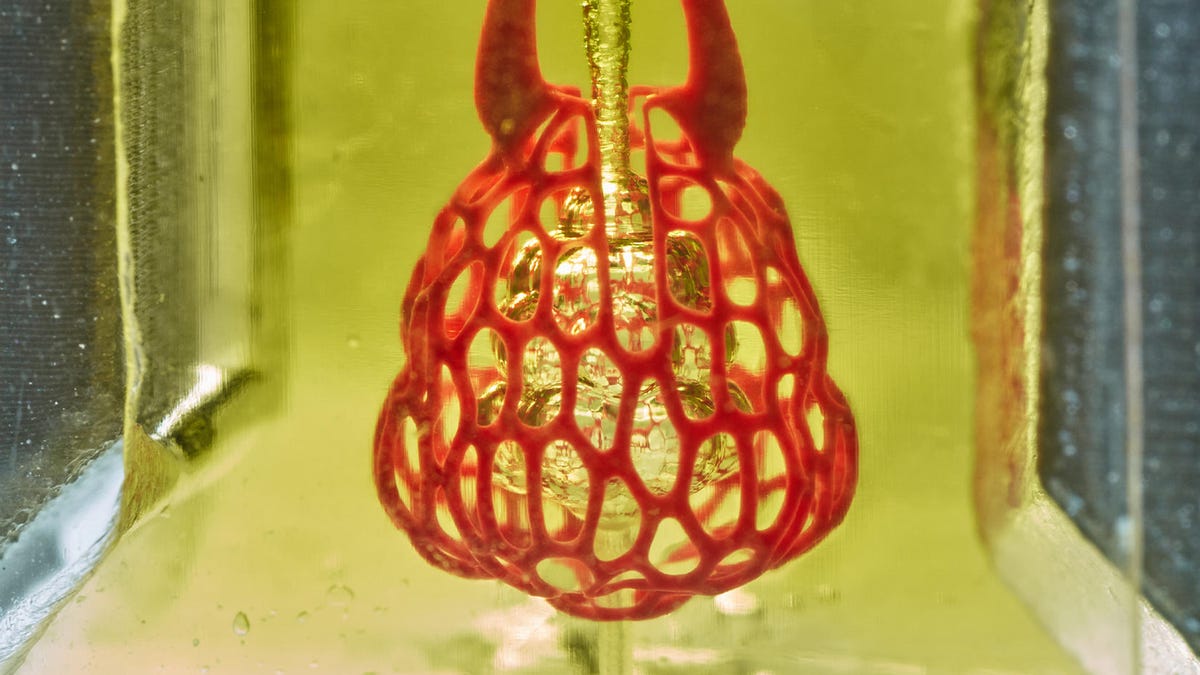Watch this wild 3D-printed lung air sac breathe
Bioengineers are exploring a breakthrough method for 3D-printing replacement organs.
Human tissues and organs are complicated structures, but scientists are working hard to figure out how to replicate them. Earlier this year, we saw the first 3D-printed heart made from human tissue. Now we can marvel at a 3D-printed lung-like air sac.
Scientists are tackling the challenge of making functional tissues that can take on nutrients and oxygen and then dispose of waste products.
A research team led by bioengineers at the University of Washington and Rice University developed an open-source technique for bioprinting tissues "with exquisitely entangled vascular networks similar to the body's natural passageways for blood, air, lymph and other vital fluids."
A video shows a 3D-printed scale model of an air sac that mimics a lung. Air is pumped into the sac to mimic breathing while blood flows through a network around the sac. The miniature system provides oxygen to red blood cells. The researchers published their work in the journal Science this week.
The 3D-printing technique is called projection stereolithography. It uses "projected light and photoreactive resins to create solid objects."
The research team discovered in can use common food additives, specifically the dye yellow No. 5, to help make the complex structure that mimics a vascular system as seen in the video footage. The non-toxic food dye is a better option for 3D-printing organ tissues than chemicals that may be carcinogenic.
The engineers hope this bioprinting technique will accelerate the development of replacement organs and tissues, getting us ever closer to the sci-fi medical future we've been waiting for.


